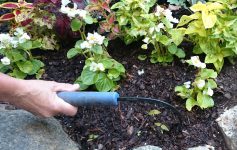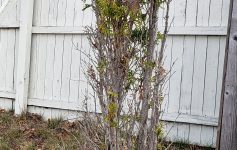
I love this old Celtic saying…….in fact I have it framed and on display in my office. The phrase came to mind 2 weeks ago when meeting with a new couple to design gardens for their front yard. After reviewing my design the gentlemen said, “Now this isn’t going to be jam packed right? I like some space in the area”. Great Question! This encounter, coupled with dialogs I had with another master gardener and observations of new garden installations throughout my travels this season, suggested today’s topic.
One of the biggest errors I see when installing new gardens is just what the customer feared…jamming numerous plants in a space to make it look “full” season one. Unfortunately this becomes a non sustainable garden. A: for the plants as they will not achieve their full potential with lack of adequate space….and B: a nightmare for the property owner who by next year sees the over done planting lacking esthetics and needing attention. Season 2 the garden owner may well be forced to get in there divide and reconfigure the area they relied upon and paid for garden design “expertise” . This situation not only lacks ecosystem sustainability, but financial sustainability with more out of pocket costs to the owner. to correct the problem.
Jamming perennials and shrubs without recognition of their growing habits is the primary problem. An easy fix for this….READ the PLANT TAG! You know, that little plastic thing with writing you see shoved in the plant pot @ point of sale. Plant retailers are required to have this in their pots at their sale locations for innumerable reasons…but most important for the consumer is identifying the grower and plant type as well as outlining growing habits. That tag is much like the fashion labels you see sewn inside clothing.: content/use and care/manufacturer.
By reading this tag you will identify site requirements like sun, water needs and general information about the height and width of the plant at maturity. Many tags even suggest the space needed for planting in multiple. When designing your garden, read the labels and plot out your area relative to plant maturity. If contracting a vendor to do so for you…ASK QUESTIONS! This will result in “spaces” in your garden for the first few years. It is not unusual to find shrub material casualties showing the first signs of this bad practice. You will begin to see the die back and poor symmetry in growth.
I like to think of this common sense sustainable garden practice in the framework of this old mystical Celtic saying. Opening up my garden dance floor to welcome dancing fairies all season long conjures up lovely visions of imagination. Ahh yes, I am a child of fairy tales and old Disney movies :).



